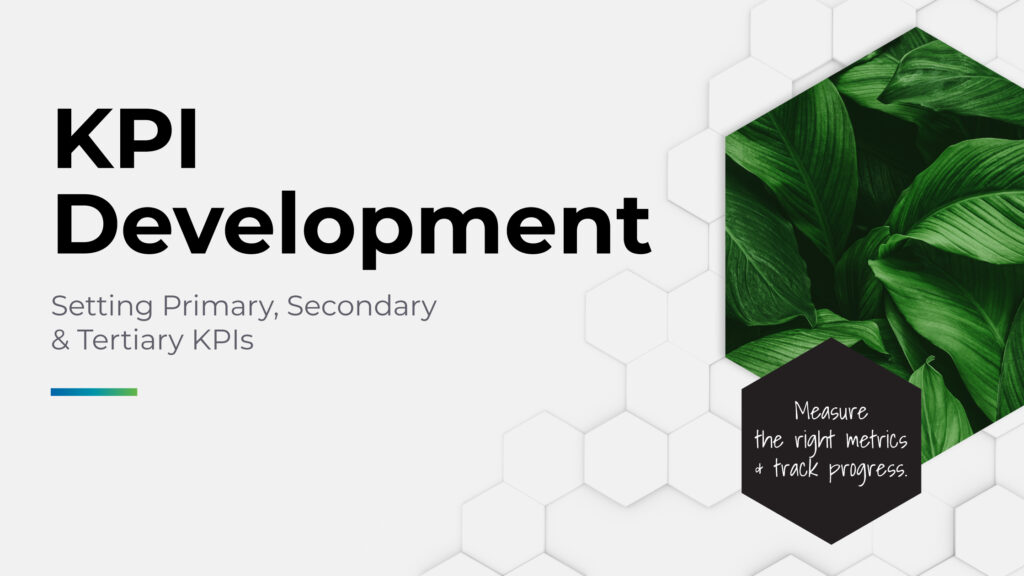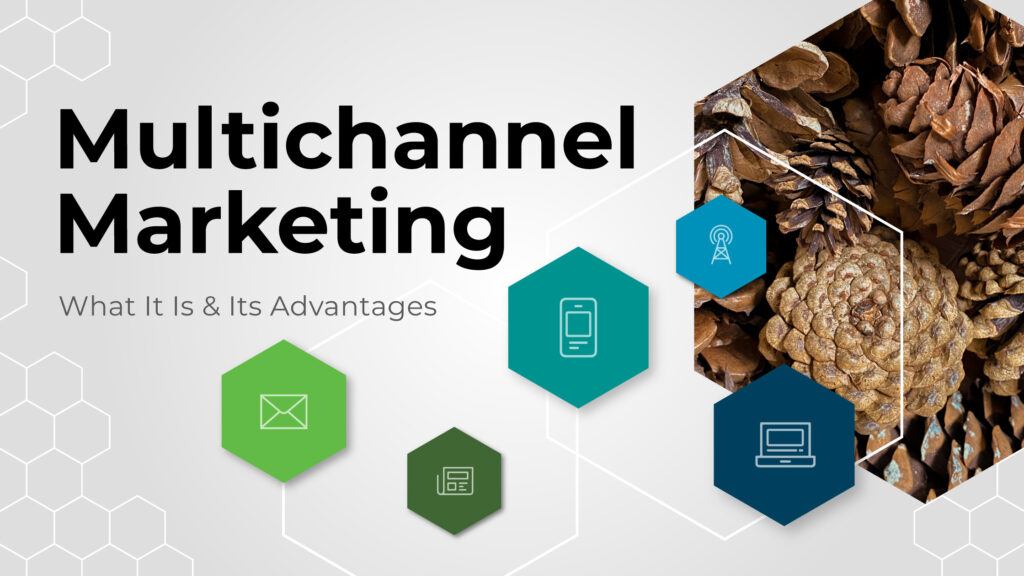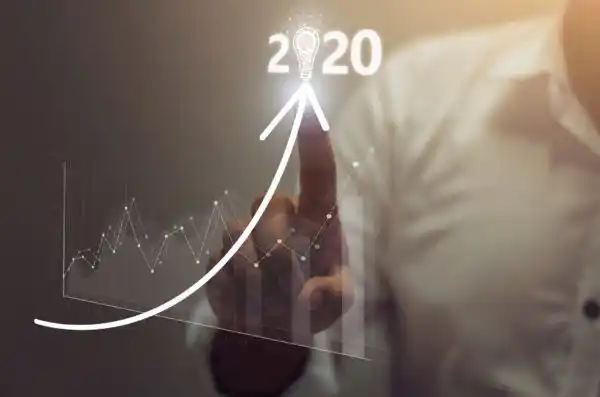
Our previous exploration of how Google and Meta ruined the top of the funnel established why brand awareness campaigns are essential to stay ahead of the competition, grow your target audience, and optimize organic traffic.
But how should you budget for one?
For starters, throw out the notion of a perfectly balanced budget.
Across every vertical, category leaders spend roughly half of their total budget on awareness—campaigns that supply the top of the funnel.
The highest performing marketing budgets always look lopsided; directing the largest chunk of resources toward brand awareness.
Keep reading to learn why this adjustment is essential and how to make it work for your brand. We’re covering:
- What an awareness campaign looks like
- How to define your campaign objectives
- How to research and plan your awareness campaign
- Allocating your budget
- Budget examples
What is an awareness campaign?
Brand awareness is critical because ready-to-convert people at the bottom of the funnel are not self-replicating. The funnel will run dry unless you budget for strategies to keep replenishing the number of net new people entering the journey.
A brand awareness campaign is a cohesive set of marketing activities that allows your target audience to discover and start learning about what your brand has to offer.
In short, it answers these questions:
- What is your product or service?
- How does it help them solve an existing problem?
- What’s different/better/smarter about your solution than the competition’s?
The goal is to create that ‘aha moment’ when customers go from being completely unaware you existed to aware that you’re in a space that’s relevant for them.
And when they’re ready to buy—or have a friend that’s ready—your brand comes to mind.
How to define your campaign objectives
Yes, everyone wishes their brand would become as familiar as Kleenex or Coke, but don’t forget that those brands dreamed of the same thing too, once upon a time.
On the road to becoming a household name (at least in the households of your target audience), what are the progressive goals along the way? Those are your brand awareness campaign objectives.
Define those objectives by first considering:
- What are your sales goals? Understand your production costs, market forces, and how many sales you need to regularly achieve to be profitable.
- What are your current conversion rates? Are you generating quality leads from reliable sources right now, or do you need to look at other channels to get quality leads ready to convert?
- What is your overall cost per lead? This can help determine where to promote your brand and give valuable insights into the competition and what they’re paying to compete.
- Do you already have a budget in mind? If so, you’ve got to be willing to adjust your goals based on what’s achievable within your spending limits.
KPI Development: Setting Primary, Secondary, & Tertiary KPIs
Learn how to set effective primary, secondary, and tertiary KPIs with our KPI development guide. Measure the right metrics and track progress.
Allocate your budget
Once you’ve established your revenue goals, allocating a budget becomes a simple math formula. We’ve mapped it out for you below.
OR, skip straight to the live version of this formula – our Marketing ROI Calculator. Enter your last campaign’s numbers and let it go to work!
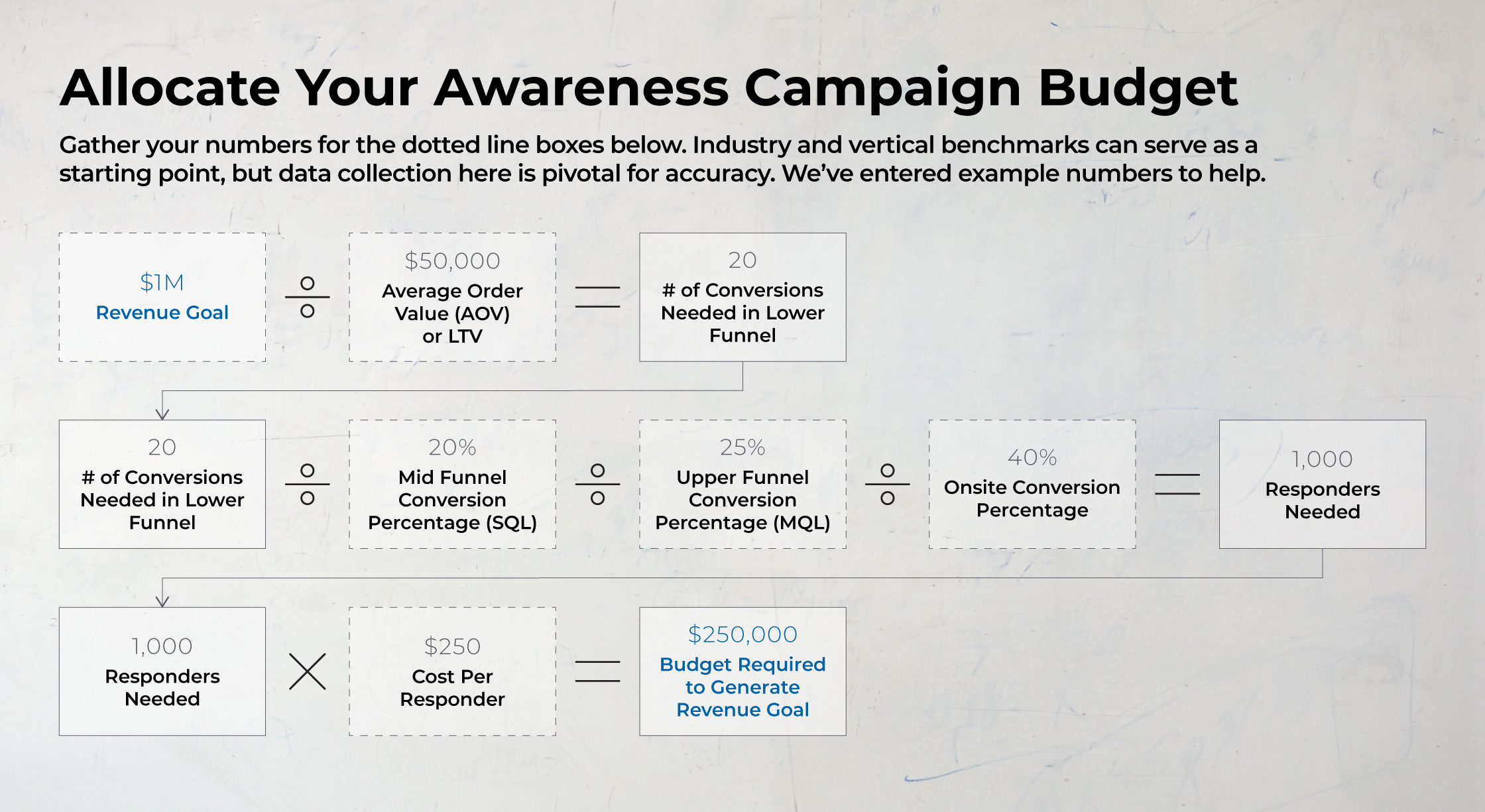
Or, if you prefer to allocate a budget first and see what revenue results you can expect, here’s the formula in reverse:
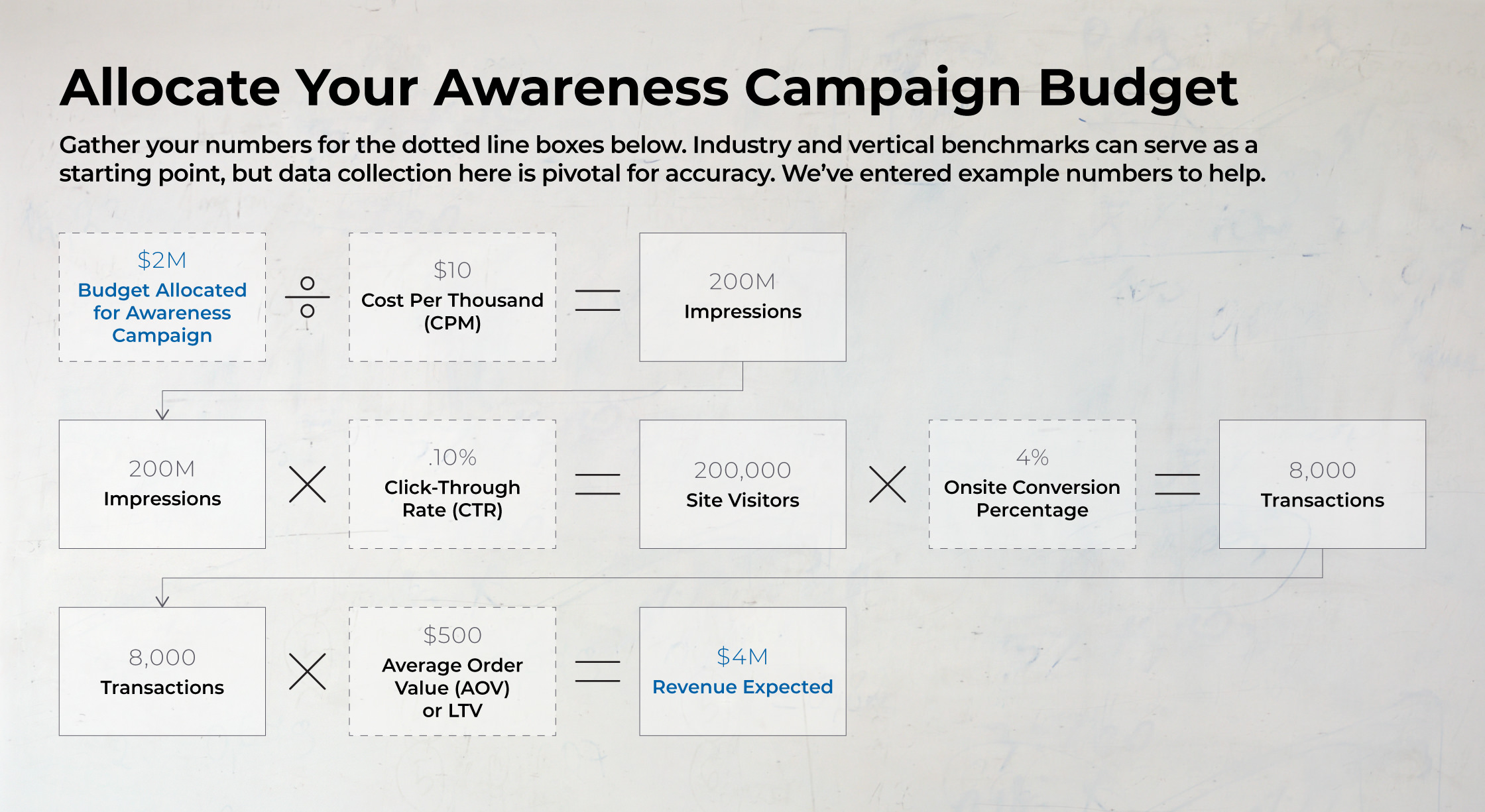
And after all that, if you still have no idea what your goals should be and you don’t yet have hard and fast numbers to plug into the formula, we recommend running small test campaigns.
Test campaigns give you solid numbers to work with. We recommend testing regularly simply because, as any seasoned digital marketer (or spiritual guru) will tell you, nothing ever stays the same.
Platforms upgrade, audiences evolve, and the only sure way to know if your product is going to resonate on a specific channel at a specific moment in time is to test it.
And keep testing it.
With each batch of testing results, you can redefine your goals and build a more robust marketing campaign.
Research and plan your awareness campaign
Just like the two sides of the brain, there are also two sides to running a brand awareness campaign.
The left side is the math side. The pure logic, numbers, KPIs, formulas, and flow charts we all know and love (at least our Apiary crew surely does). Marketing math is the heart of everything we do.
Then there’s the right side of the brain. The creative piece that, while informed by the numbers, relies on art, creativity, and the psychology of human nature to bring a campaign to life.
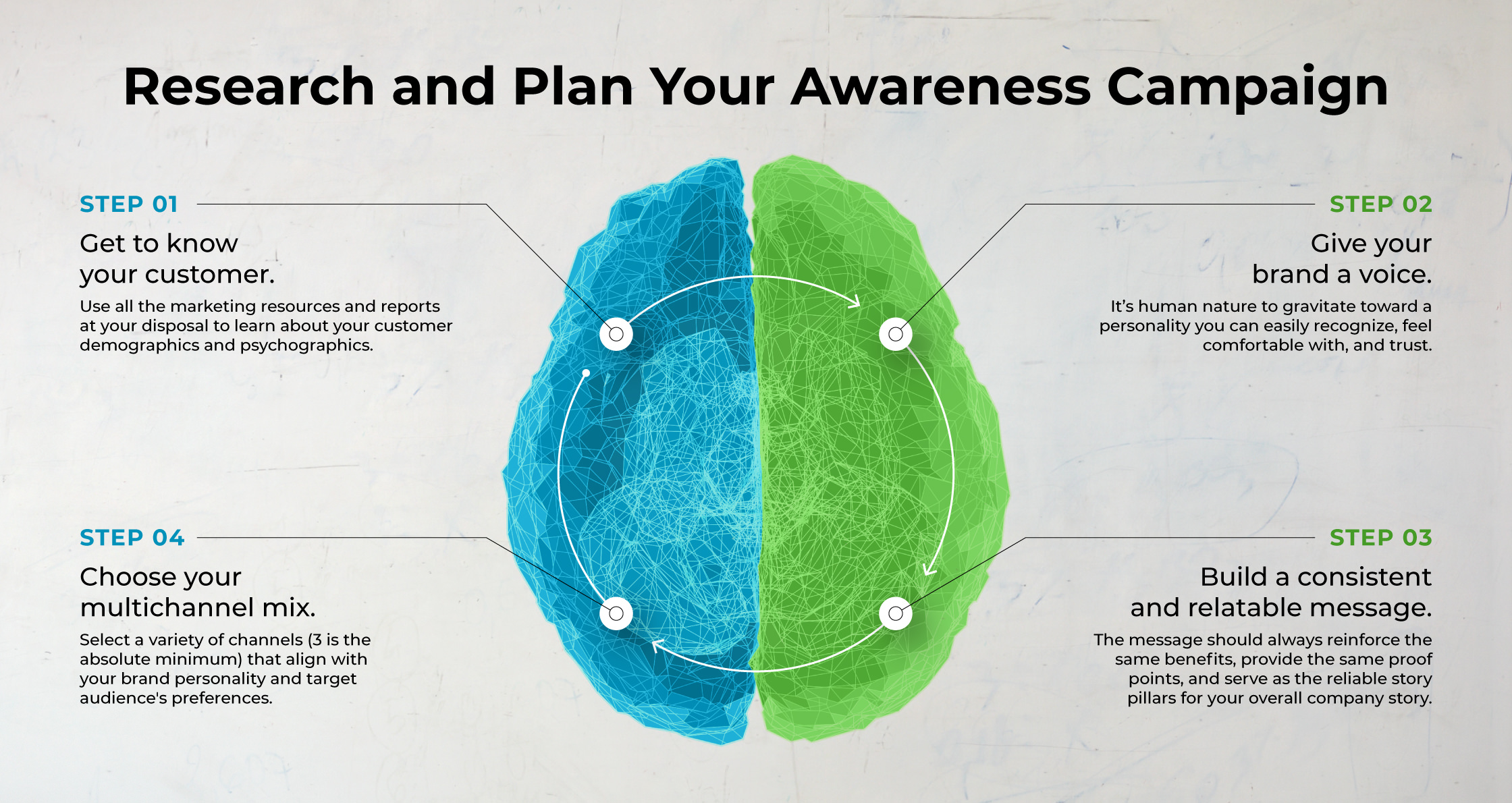
The key components of developing the right marketing mix for your brand are:
Step 1: Get to know your customer
Use all the marketing resources and reports at your disposal to scrutinize customer behavior. You need to know (and stay up to date because these things change periodically!) things like:
- Literally everything about their media usage and habits
- How they use your website during each phase of the funnel (the use case evolves as they move down the funnel)
- How they make buying decisions
- Who they took to their high school prom… Okay, maybe don’t go that far, but you get the drift.
Step 2: Give your brand a voice
Whether we’re selecting friends, romantic partners, or a brand we want to do business with, it’s human nature to gravitate toward a personality you can easily recognize, feel comfortable with, and trust.
- Is your brand voice formal, friendly, warm, jovial, informative, authoritative, or something else?
- What sort of voice does your audience respond best to?
- Do your voice values flex depending on the context? How so?
- And where is all this documented to ensure all content creators are aligned in their deliverables?
Step 3: Build a consistent and relatable message
Your marketing message will vary depending on your product/service and the phase of the journey where a potential customer is interacting with you.
Despite this, the message should always reinforce the same benefits, provide the same proof points, and serve as the reliable narrative pillars for your overall company story.
Step 4: Choose your multichannel mix
Brands have never had so many promotional channels to choose from, so what factors are you considering as you weigh the options and make your selections?
The more traditional channels:
- TV commercials
- Magazine ads
- Radio slots
- PR campaigns
- Billboards, and more.
The ever-growing list of digital options includes:
- Over a dozen ad types
- Social media (Facebook, LinkedIn, Instagram, TikTok, and so on)
- Search
- Your own website
- External websites, and more.
We did a deep dive analysis on multichannel marketing. Check that out!
Why category leaders practice Multichannel Marketing and how to emulate their tactics.
Once you have a basic idea of your ideal channels, use the Apiary ROI calculator to plug in your numbers, measure attribution, and determine the impact of your spending.
This calculator is really a template for success.
Enter real numbers from your last multichannel campaign to see how you’re doing, or play around with anticipated numbers to see how performance can change.
Examples of budgets for awareness campaigns
Example #1
Using a math-driven awareness campaign, we helped a highly specialized B2B company add 6,000 new opportunities and increase revenue by $6 million based on a campaign budget of $1 million across media channels.
Our performance guide on How to Track and Measure Brand Awareness ROI has more details on this one. Check that out!
Example #2
For an eCommerce marketing client-partner in the retail space, we isolated the impact generated by their brand awareness marketing efforts to validate its contribution, independent from last-click sales attribution.
Many marketers still believe that measuring awareness, much less separating the impact of awareness from last-click conversions, is impossible. With a math-minded partner like us, it’s not. #8thgradealgebra
Our test involved turning off awareness (very briefly) and measuring the online and in-store impact during the test and for the 90-day period after awareness spend resumed.
This allowed us to create a framework for measuring the ROI impact, and estimate future impact with a high degree of accuracy.
TL;DR on Brand Awareness Budget Sample
- Leaders in every category spend about half of their budget on brand awareness.
- More brands would see more success if they increased their appetite for running smaller test campaigns. Make testing part of your marketing DNA.
- The Apiary ROI calculator can help you determine your budget based on your revenue goals, or vice versa.
